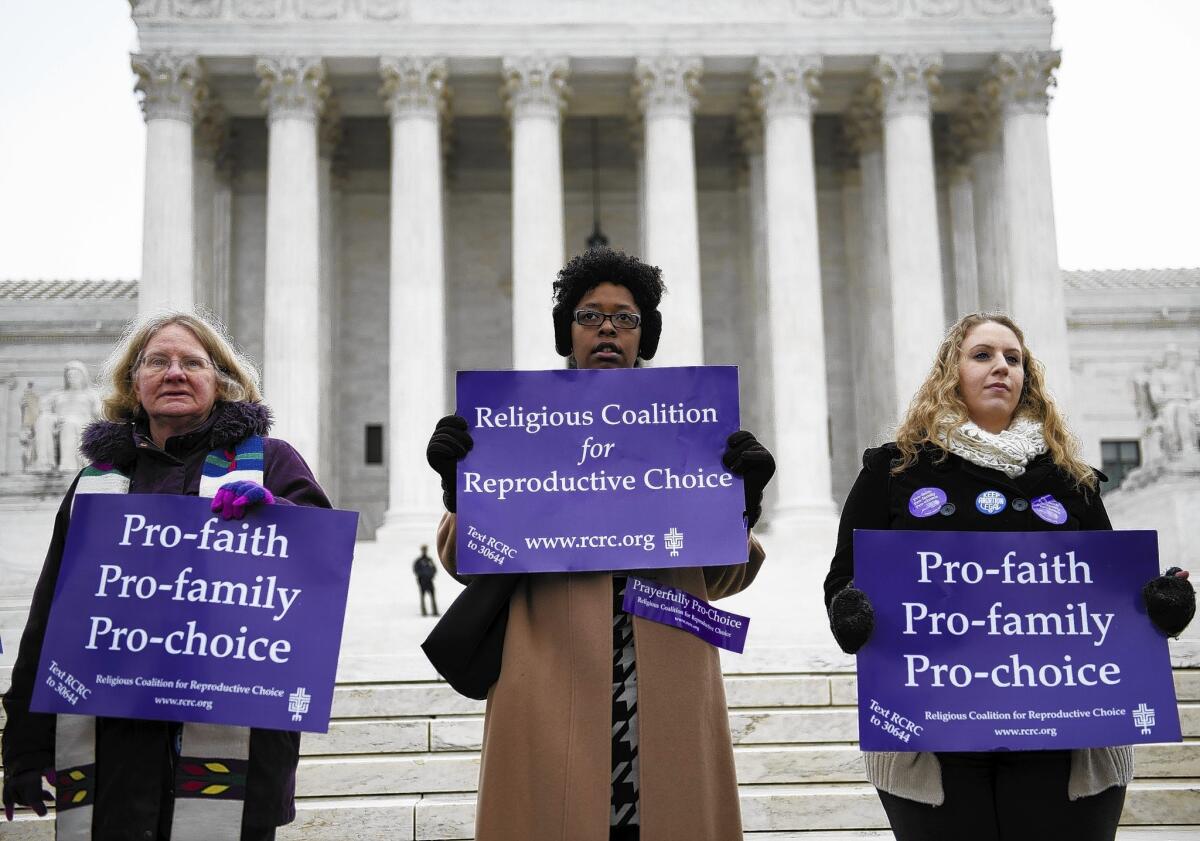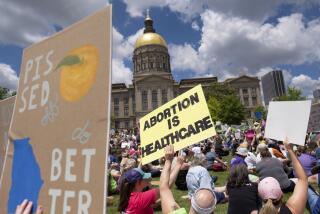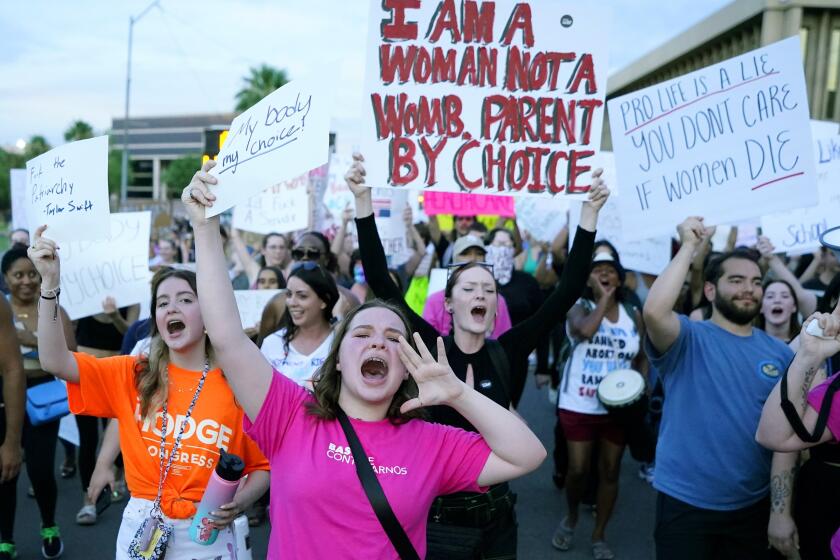Supreme Court signals opposition to abortion clinic buffer zone

WASHINGTON — In a case pitting free speech against abortion rights, Supreme Court justices signaled Wednesday they were inclined to strike down a Massachusetts law that sets a 35-foot buffer zone to prevent protesters from approaching clinics that offer the procedure.
Opponents called the law a violation of free speech and complained it prohibits “peaceful conversation on a public sidewalk,” said Mark Rienzi, the attorney representing antiabortion activist Eleanor McCullen, 77, from Boston. Calling themselves “sidewalk counselors,” McCullen and other activists stand outside clinic entrances and urge women seeking abortions to change their minds.
An attorney for Massachusetts and the Obama administration defended the law as a reasonable way to deal with the violence and disruptions that have been seen at abortion clinics in the Boston area. They said abortion opponents were free to speak to people who were walking down the street toward the clinic, but the law prevented them from getting close to the entrance.
The buffer-zone restriction applies only to “the last four to five seconds before they enter the clinic,” said Ian Gershengorn, a deputy U.S. solicitor general.
In their comments and questions on McCullen vs. Coakley, however, most of the justices appeared to agree with antiabortion advocates who said a 35-foot buffer zone goes too far. Rienzi argued that rather than imposing a blanket buffer zone at all times, clinics should simply call the police if and when activists are preventing patients from entering.
The court’s conservatives, led by Justice Antonin Scalia, said they thought such a law clearly violated the 1st Amendment. Several of the liberal justices commented that the 35-foot zone may be broader than needed.
This “is a counseling case, not a protest case,” Scalia insisted. “Surely, you could have a law against screaming and shouting within 35 feet…. These people want to speak quietly in a friendly manner.”
The court’s ruling could effect similar buffer zones used to protect government and military institutions and activities. Several justices noted that federal law sets a quiet zone around military funerals. Other laws forbid people from confronting those who are entering a polling place or a county courthouse. The Supreme Court enforces a no-protest rule on the marble plaza in front of its building.
In the 1990s, the high court upheld a judge’s orders from Florida that barred antiabortion activists from coming within 36 feet of the doorway of a clinic that had been the scene of loud demonstrations. And in 2000, the court in a 6-3 decision upheld a Colorado law that set a 10-foot buffer zone around abortion clinics.
Then, the three dissenters — Justices Anthony M. Kennedy, Clarence Thomas and Scalia — said the Colorado law violated the 1st Amendment. Then-Chief Justice William H. Rehnquist and then-Justice Sandra Day O’Connor, who voted with the majority, have since been replaced by President George W. Bush’s two appointees: Chief Justice John G. Roberts Jr. and Justice Samuel A. Alito Jr.
If they join with their fellow conservatives in McCullen vs. Coakley, there will be a majority to either narrow or outlaw buffer zones on public sidewalks.
After brushing aside three other abortion-related cases in recent months, the Massachusetts case was seen as one of the last opportunities for justices to enter the debate during this term.
More to Read
Sign up for Essential California
The most important California stories and recommendations in your inbox every morning.
You may occasionally receive promotional content from the Los Angeles Times.











